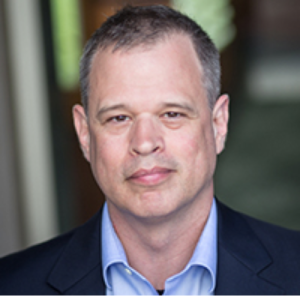by Edwin Miller
 July 2020 – “I’ve been fired more times than anyone in this room.” – Ken Schwaber, Inventor of SCRUM, while teaching an early SCRUM certification course.
July 2020 – “I’ve been fired more times than anyone in this room.” – Ken Schwaber, Inventor of SCRUM, while teaching an early SCRUM certification course.
I’ll admit it. I’ve had many job changes since the early ‘90s when I started in HIT. It should be no surprise then that I’m familiar with Michael Watkins’ excellent book, The First 90 Days about how to find transitional success in a new role. There are many useful framings in the book including the “STARS” framework for assessing your new job situation (Start-up, Turnaround, Accelerated growth, Realignment, and Sustaining success).
While most situations don’t fit cleanly into one STARS category, picking the right framing at the beginning of a new role can make the difference between early wins and overall success and stumbling out of the gate and making fatal mistakes that lead to an unexpectedly short tenure.
Rather than applying STARS to new jobs, it can be useful to look at your current role especially if you’ve held it for a year or longer. Time in a role brings a certain blindness to the possibility of change. There are always 10 reasons not to make that change this quarter. Someone new is not encumbered by that history and I’ve found it a great exercise to see things through their eyes.
Ask yourself, “What would my replacement do if they started next Monday? What STARS strategy would they pick?”
My experience is that new hires routinely overuse the “turnaround” strategy. It’s easy to think of yourself as the hero coming in to “clean things up” from the previous leader. True turnarounds are more rare than you may think and are less desirable career moves over the long run in my opinion. That said, managers won’t identify a turnaround situation when they are looking at their own work. Then it’s anything but a turnaround! There’s a reason for everything!
The importance of humble inquiry to identify blind spots
This is heavy stuff. What would your replacement change right away? What’s blindingly obvious to anyone new? What areas do I secretly know need to change but have held back because of inertia, fear or avoidance of a tough conversation? Who would your replacement fire that you’ve kept in the wrong role for too long? Who would they move into different roles? What org structure changes would they make? What process changes would they adopt? How would they communicate more effectively up, down and across the organization? Who would they listen to in the organization that you may not have?
Think about the last 10 suggestion patterns you dismissed from your colleagues – peers, those who report to you, or even customers. Some may be things you’ve heard repeatedly. Ask yourself whether someone coming in fresh would see it as a win to make some of the difficult changes you’ve been avoiding.
The importance of personal reinvention in growth organizations.
If you are in a high-growth organization, change is always around the corner – increased expectations, revenue growth, strategy pivots, scaling challenges, growing bench strength and delegation on your team all require re-assessing what you are doing. This can be stressful and scary. Find a way to channel that agita into a detached, outsider look at how you, your organization and your attitude need to change to support the next growth stage. Frame out your changes as if you are in the first 90 days of a new role. It may be that you already are.
The importance of letting go
The most pernicious changes will be around processes or even team members or roles that you’ve held sacred and protected, perhaps with a fair amount of ego invested. Rest assured that your replacement will have no such ego stake maintaining those monuments. You have heard, but dismissed, feedback or a desire for change from stakeholders, peers, or your team. These are likely areas that someone new will see as an opportunity to improve on what you are doing. It’s important to find happiness in letting go of things that may have served well in the past but won’t get the organization where it needs to go.
I have found it far better to ask these questions of myself and initiate change before someone asks me or forces my hand. Change may be more fun than you think.
About the Author
Edwin Miller was most recently co-founder and chief product officer at Aledade where he drove overall product strategy and execution at the company, including identifying, defining and measuring products to maximize the scope of impactable cost, quality and practice engagement across Aledade’s contracted patient populations. Mr. Miller is a two-decade veteran of healthcare software development, who has led the development of more than 30 nationally-recognized products across the healthcare technology landscape. He has headed the development of cloud-based software for CareCloud, digiChart, AthenaHealth, and others. He has his MBA from the Owen Graduate School of Management at Vanderbilt University.


Mano Kalathil
This was such an eye opener. And perhaps specifically because I am in a period of introspection, was such a timely post.
Thank you, Edwin
Edwin Miller
Thank you!